
Compatible Solution for SSD1309 and CH1116 IC
Since the COVID-19 pandemic began in 2020, COVID-19 has changed the supply chain balance, resulting in insufficient IC capacity in the display market. The supply of SSD1309 has become unstable, and lead times are getting longer. To guarantee on-time delivery to customers, we develop a new series using CH1116 to replace SSD1309.
In terms of modules, SSD1309 and CH1116 are compatible with each other. The following will explain the differences between the two from the hardware and software perspective and how to achieve compatibility.

1. Hardware
Some pins of SSD1309 and CH1116 have different names but the same functions. For example, VDD, VCC, D/C, and BS0 of SSD1309 are equivalent to VDD1, VPP, A0, and IM0 of CH1116. Some pins have the same function but need to use different passive components, such as the resistance of pin IREF. The recommended circuit diagrams of the two ICs are shown in Figure 1 and Figure 2.
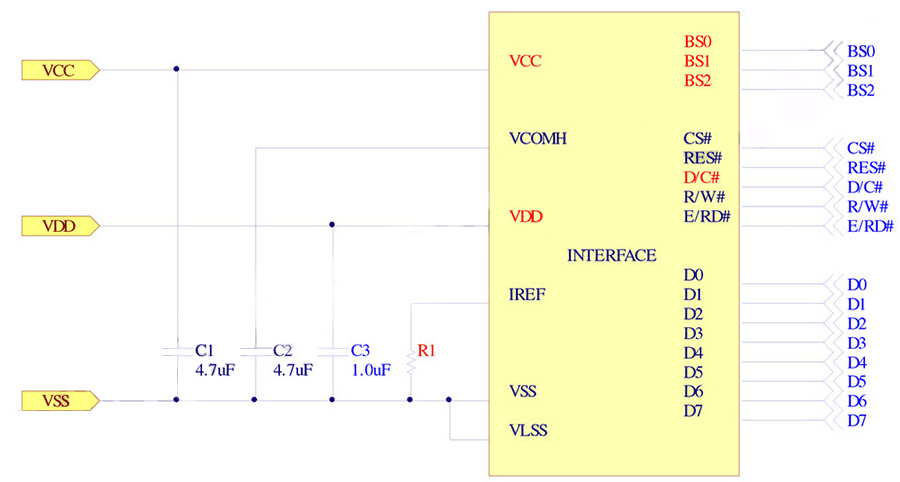
Figure 1. SSD1309 Application recommendations
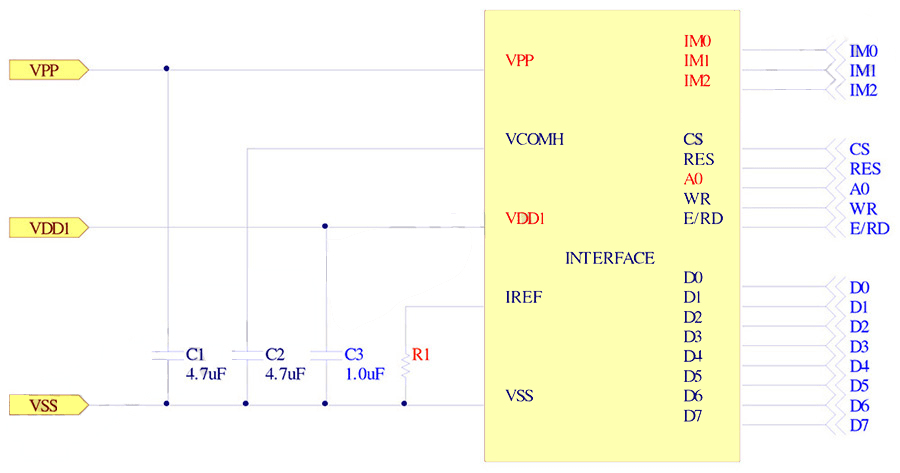
Figure 2. CH1116 Application recommendations
1.1. Pin IREF
Please pay attention to the resistance value of pin IREF, which can directly affect the brightness and current. When both ICs use the same VCC (VPP), the SSD1309 needs a larger resistance value. The formula for the resistance is below.
SSD1309:
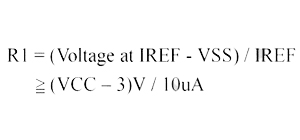 CH1116:
CH1116:
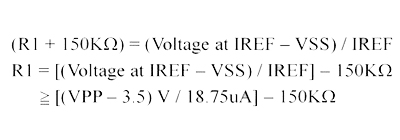
2. Software
Most of the commands of SSD1309 and CH1116 are compatible, but some are still different. For example, two ICs each have exclusive functions, so the IC can only use some commands. In addition, some commands have the samefunction, but the parameters are incompatible, as shown in Table
Table 1. Command difference between SSD1309 and CH1116
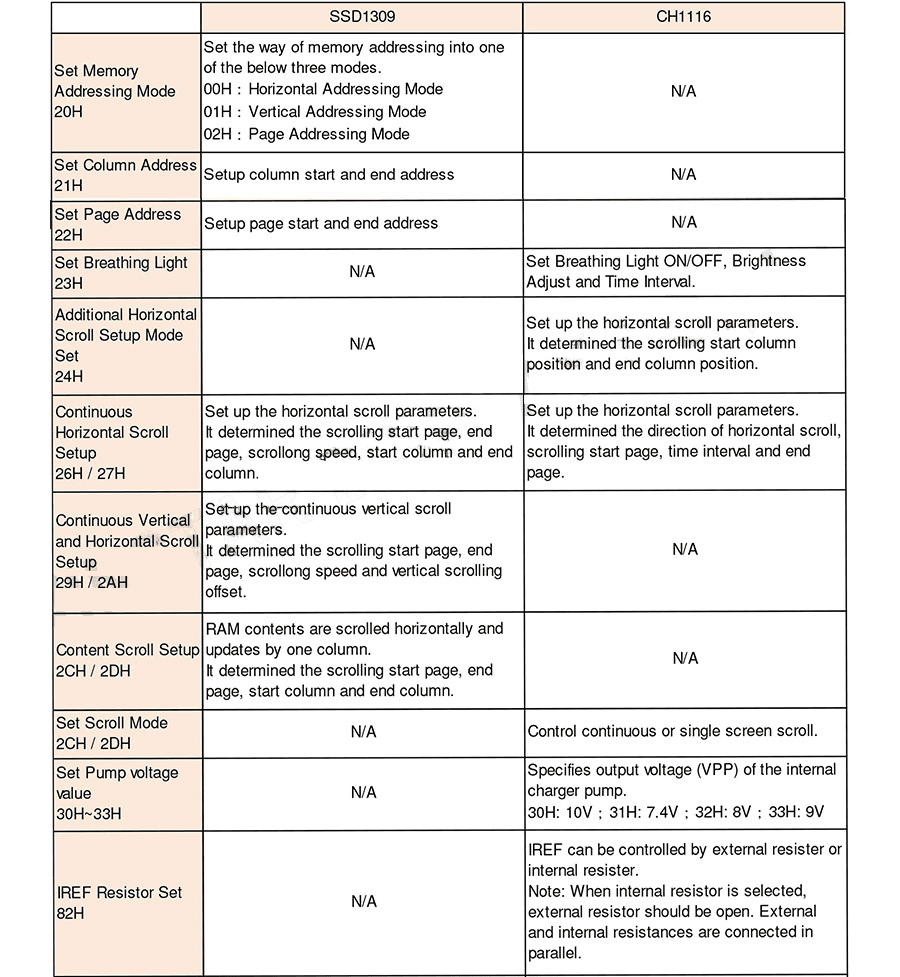
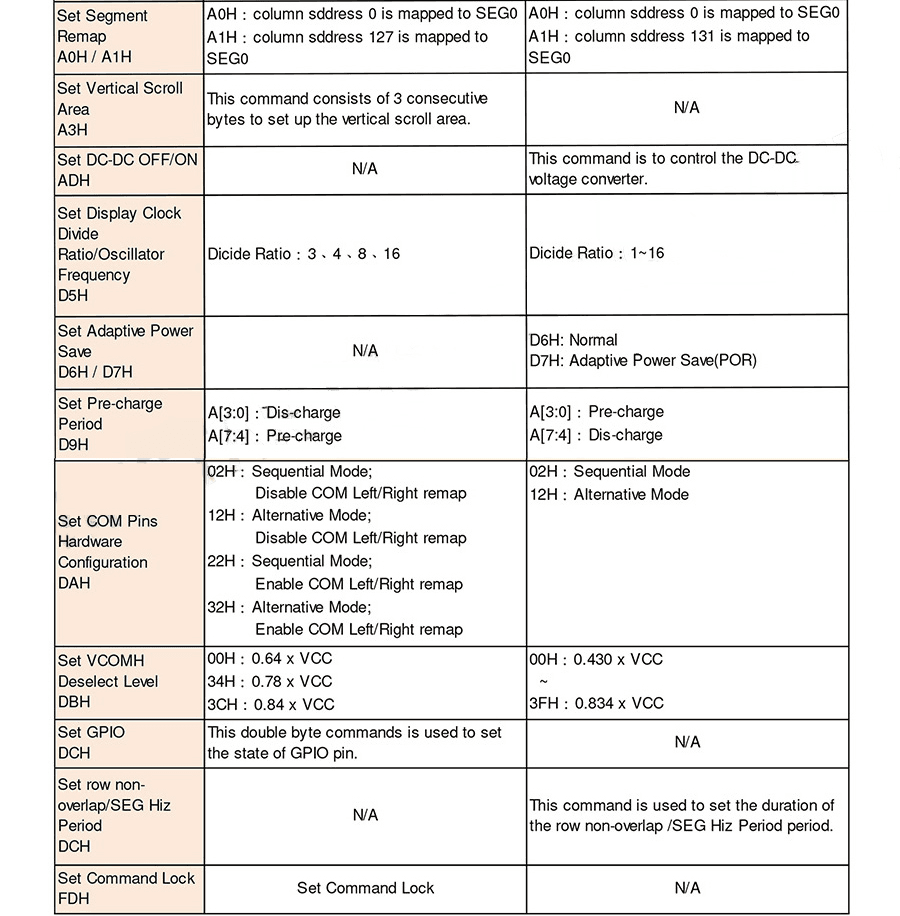
3. Compatibility
In order to make the ICs compatible to each other, the hardware and software of the module need to be modified. The pins of the two ICs are roughly the same in terms of hardware. The resistance value of IREF must conform to the respective calculation formulas at the same time. If the resistance value is too small, there is a risk of burning out the IC. In addition, VCC (VPP) must follow the specifications of SSD1309 and CH1116 simultaneously; the former is 7V-16V, and the latter is 6.4V-14V.
In terms of software, there are three points to note:
-
There are many Memory Addressing Modes for SSD1309 to choose from, but CH1116 only has Page Addressing Mode. Therefore, we recommend using Page Addressing Mode.
-
The resolution of the SSD1309 supports 128x64, and CH1116 is 132x64. When setting Segment Remap (A0h/A1h), we recommend using A0h to avoid offsetting the display pattern.
-
We can choose whether to turn on the DC-DC Voltage Converter (ADh) of CH1116, but SSD1309 does not have this function. We recommend turning off the DC-DC converter of CH1116 and using external VCC/VPP.
In addition, by setting the Command Lock (FDh) of SSD1309, the respective commands of the two ICs can be written in the same initial code, as shown in Figure 3, Figure 4, and Figure 5. The commands circled by red boxes are differences between the two initial codes. In Figure 5, after using FDh to lock the IC, SSD1309 does not accept any commands except FDh, but CH1116 is not affected. Therefore, we can issue commands to the two ICs separately.
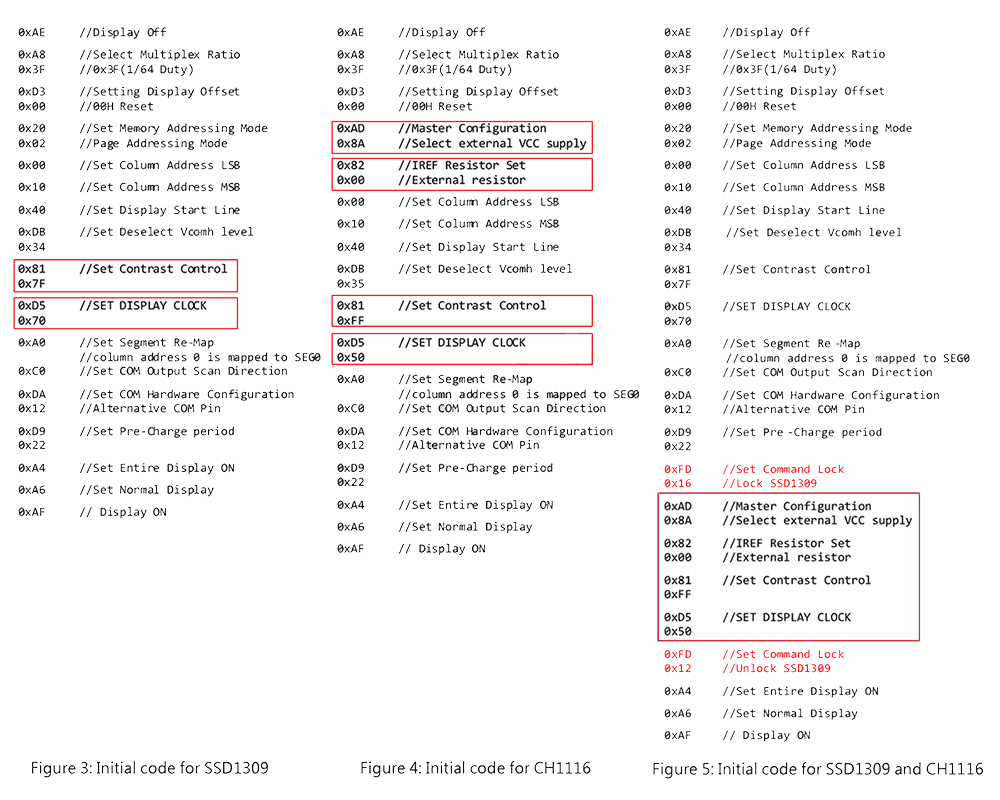
4. Conclusion
These two ICs, SSD1309 and CH1116 are compatible with each other. We can have the same display image and brightness by using the same hardware and software. As long as the components such as resistors and capacitors are adjusted, and the initial code is modified, SSD1309 can be replaced with CH1116. According to the situation, we can modify the software slightly without changing the hardware to make the two ICs achieve the same display effect.
We continue to bring high-quality and optimized products to the market and offer competitive solutions to our customers.
